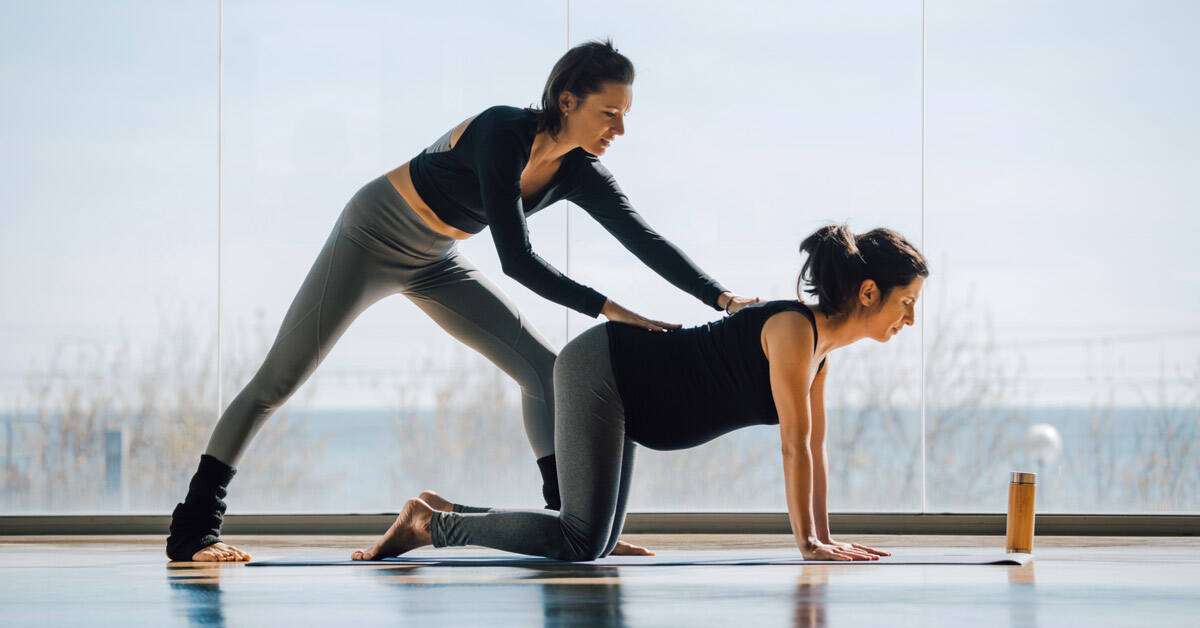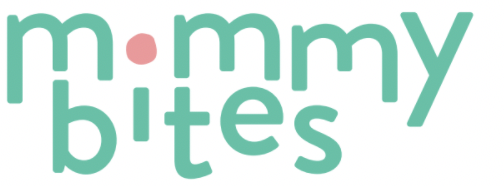
Once you turn the corner into your third trimester, you may notice that the pregnancy “honeymoon” is over. Your baby’s growth is accelerating and you may be experiencing a whole new batch of aches and pains.
Pregnancy yoga within the third trimester focuses on preparing the body for labor and delivery and encouraging the baby the move into optimal fetal position. To do this, there are certain poses that we emphasize and some that we omit from our yoga cannon. The following are some basic dos and don’ts in the third trimester.
Getting on all fours
Most of the poses we include in class help the baby move into an anterior position. This is when the baby’s spine is facing the mothers front. Picture yourself in on all fours, or even get on the floor on hands and knees. Your belly is facing the floor and creating a “hammock” for your baby to lie in.
The heaviest part of the baby is the back and Occiput (back of the skull). Since babies are affected by gravity, doing poses on all fours will continue to encourage your baby to swing forward, away from your back. It also takes pressure off the lower back, which is bearing the brunt of the front loaded belly at this point. Poses in this family include, cat/cow, flowing cat/cow, body circles, child’s pose, and downward facing dog.
Side lying savasana
No more long supine at the end of class! We start most of our classes with a few minutes in a restorative pose, usually inclined supta baddha konasana (reclined goddess pose). While these poses are extremely restful, which is vital for the often depleted third trimester mama, they are counter intuitive for the end of class.
As we just discussed, baby’s internal placement is influenced by the mother’s body positions. At the end of class, we do not want mothers resting on their backs, which may encourage the baby into the posterior position. Instead, the mothers set themselves up in a side lying savasana.
To do this, we have the mothers rest on whichever side is most comfortable. Elevate the top leg on a block or bolster so that the knee, shin and ankle are at a 90 degree angle, and in line with the top hip. The women are also rolling toward their bellies so they are not loading the bottom hip with too much weight. With the top leg propped up on a bolster or pillow, the mother can safely roll toward her belly without concern that she will roll onto her belly.

Read Next | Get Off Your Back and Explore These Birthing Positions
Hip Openers
The pelvis goes through tremendous change and compromise during pregnancy. Because of this, it is important to include poses that will help bring balance and stability to the muscles and joints.
Remember to include poses that work the hips in all directions, not just external rotation, which is most commonly associated with hip opening poses. The full family of hip openers accesses the full range of motion of the hip joint: internal rotation, external rotation, adduction and abduction, and flexion and extension.
No Long Inversions
We avoid most inversions such as headstand, shoulder stand, forearm stand or handstand in our prenatal classes. By the third trimester, the focus should be on the apana vayu, the downward flowing energy, as well as getting the baby head down and keeping it there. I only recommend inversions for those who are trying to turn a breach baby.
Keep kegeling!
Sometimes students are concerned about practicing kegels throughout their whole pregnancy. One student explained that she was worried this would make her pelvic floor so toned she would have a hard time opening up. There is some validity to this statement. Some professional athletes and dancers have such an over-engaged and toned pelvic floor (which is called hypertonicity of the pelvic floor) that they will have a harder time relaxing the pelvic floor for a vaginal birth. However, the majority of women do not have this issue.
In prenatal yoga class, we focus on finding balance to the pelvic floor. This means learning how to engage the pelvic floor muscles for support as well as understanding how to consciously relax these muscles. A well-balanced pelvic floor can help facilitate an easier passageway for the baby as it rotates through the vaginal canal during delivery.
Squats
For mamas trying to turn a breach baby, squats are not for you! Those who suffer from pubic symphysis and sacroiliac dysfunction should also steer clear of squats, as they can exasperate the problem. Squatting opens the outlet of the pelvis approximately 28% more than in a reclined position, which makes squatting a valuable tool during labor and delivery. However, our culture is not a squatting culture, so your ankles, knees, hips and back may not be ready for prolonged squatting, and you should practice ahead of time.
If your ankles and Achilles tendons are tight, the heels will light off the floor pelvis descends. If this is the case, place a blanket under the heels for support. You want the whole foot evenly balanced with weight not centered on the front of the foot. The chest should be upright, arches lifted and the inner knees not rolling in. I also like teaching squatting either with a partner, against a birth ball or wall. This helps the woman lean back and corrects the problems just mentioned.
So now you have some basic guidelines for yoga in the third trimester. During this final stretch of pregnancy, you may find it even more important to slow down, breathe and enjoy your yoga practice. Time post-baby may be limited, and your focus and practice will likely shift toward your new little one.
https://mommybites.com/wp-content/uploads/2013/01/pregnant-yoga-movement-375×196.jpg
Read Next | This Is Why Movement Is Important during Labor
Debra Flashenberg, CD(DONA), LCCE, E-RYT 500 is the director of the Prenatal Yoga Center. After several years as a yoga student, she decided to continue her education and became certified as a Bikram Yoga instructor. In 2006, Debra received her certification as a Lamaze® Certified Childbirth Educator. In September of 2007, Debra completed a Midwife Assistant Program with Ina May Gaskin, Pamela Hunt and many of the other Farm Midwives at The Farm Midwifery Center in Tennessee. Drawing on her experience as a prenatal yoga teacher, labor support doula and childbirth educator, Debra looks to establish safe and effective classes for pregnancy and beyond.
Like what you read? JOIN the Mommybites community to get the latest on FREE online classes, parenting advice, events, childcare listings, casting calls & raffles, and our Parents With Nannies Facebook group. SIGN UP NOW!
The views and opinions expressed on this blog are purely the blog contributor’s. Any product claim, statistic, quote or other representation about a product or service should be verified with the manufacturer or provider. Writers may have conflicts of interest, and their opinions are their own.



